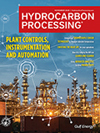Gas Processing/LNG
Russia sees scope for oil exports boost to China, urges cooperation in LNG
China and India have become the main buyers of Russian oil since the start of Russia's military campaign in Ukraine in February 2022.
Tecnimont attends ground-breaking ceremony of Tengiz Gas separation Complex in Kazakhstan
The facility is designed to recover at least 98% of ethane from dry gas, and its output will feed the second phase of the Silleno petrochemical complex, focused on polyethylene production—another major project being executed by Tecnimont.
IEA: World oil and gas demand could grow until 2050
The Paris-based energy security watchdog predicted in its annual outlook that the world will likely fail to meet its goal to cap the rise in temperatures to as close as possible to 1.5°C degrees (2.7°F) above pre-industrial times to avoid the most devastating effects of climate change.
Plug Power partners with Edgewood Renewables to build renewable fuels facility in Nevada (U.S.)
The project is designed to process waste biomass feedstocks to produce sustainable aviation fuel (SAF), renewable diesel (RD), and bio-methanol, while utilizing, within its process, renewable natural gas (RNG) and low-carbon H2.
Western pressure to hit Asian buying of Russian oil and LNG from December
Washington is exerting pressure on China, India and Japan through trade talks to reduce their purchases of Russian oil and LNG, while Britain has just imposed sanctions on Chinese and Indian entities.
PSB Industries’ advanced line of specialty gas dryers for the oil and gas industry
These advanced dryers offer superior performance in purifying argon, helium, nitrogen and hydrogen gases, ensuring the highest levels of purity and efficiency for critical oil and gas operations.
A refresher on Russia's commodities clout ahead of Trump-Putin talks
Prior to its invasion of Ukraine in 2022, Russia was a leading exporter of crude oil, natural gas, coal, aluminum, nickel, steel, wheat and fertilizers - among other commodities - and the top supplier of energy products to Europe.
Energy tech firm Lummus confidentially files for U.S. IPO amid Trump's domestic push
Energy solutions company Lummus Technology said on Monday it has confidentially filed for an initial public offering in the United States amid President Donald Trump's broader strategy to enhance domestic energy production.
EIA: U.S. hydrocarbon production supported by export growth in long-term projections
In its Annual Energy Outlook 2025 (AEO2025), the U.S. Energy Information Administration (EIA) projects that U.S. production growth of crude oil and natural gas will remain relatively high through 2030 due to increasing U.S. exports of petroleum products and liquefied natural gas (LNG), as U.S. energy exports continue to be economical for international consumers.

- NAPCOR releases 2024 PET recycling report highlighting system efficiency gains and continued strength of PET circularity 12/12
- OQ courts other partners for petrochemical complex in Oman as SABIC drops out 12/12
- Brazil's BNDES approves $71 MM for carbon storage project 12/12
- Cuba on edge as U.S. seizure of oil tanker puts supply at risk 12/12
- China oil demand to plateau between 2025 and 2030 12/12
- Germany's PCK refinery says no impact from pipeline leak 12/12




